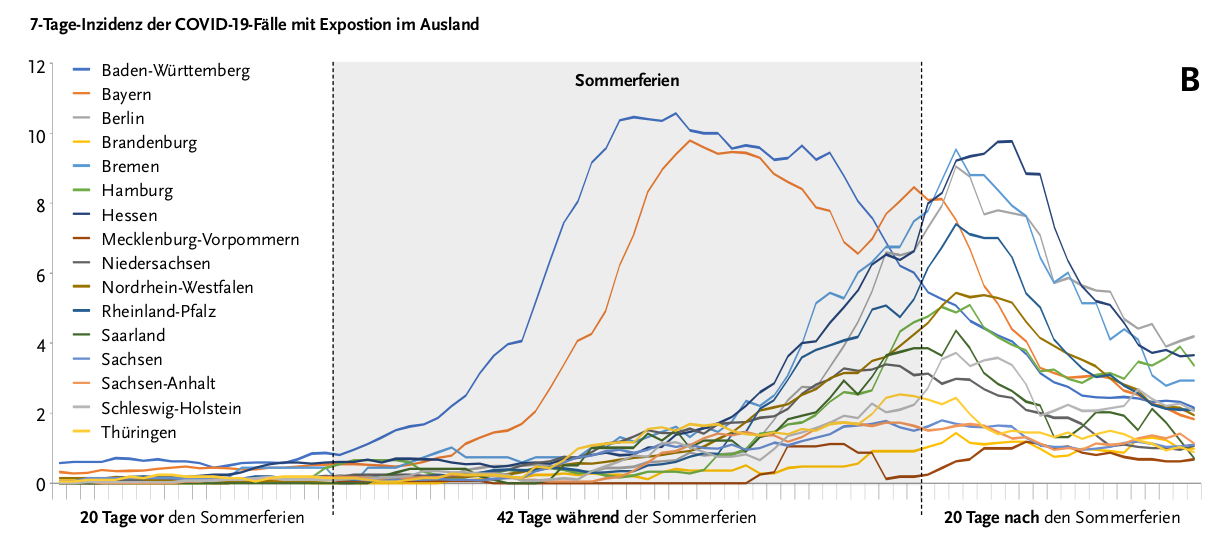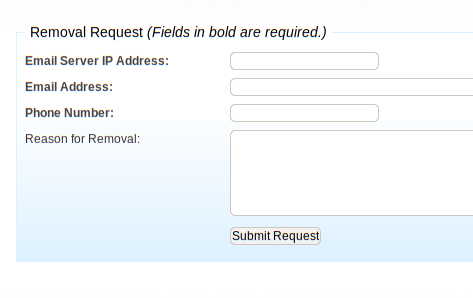Die Viren loben
„Jetzt ist aber wirklich höchste Zeit, dass Corona endlich mal weggeht“ ist inzwischen ein universelles Sentiment, und auch mich lockt gelegentlich die autoritäre Versuchung, einen „harten Lockdown“ zu wünschen, damit das Ding weggeht (was es natürlich nicht täte). Der Hass auf SARS-2 steigt, und damit womöglich auf Viren allgemein.
In der Tat scheinen Viren erstmal richtig doof, eklig und widerwärtig. Wie scheiße ist das eigentlich, sich von den Zellen vertrauensvoll aufnehmen zu lassen und dann den Laden zu übernehmen mit dem einzigen Ziel, neues Virus zu machen? Und dann die Ähnlichkeit von z.B. der T2-Bakteriophage mit Invasoren vom Mars...
Andererseits bin ich überzeugt, dass eine gewisse Anfälligkeit gegen Viren wahrscheinlich ein evolutionärer Vorteil ist. Da gibts bestimmt jede Menge echte Wissenschaft dazu, aber ich denke, eine einfache Intiution geht auch ohne: Praktisch alle Viren nämlich wirken nur auf kurze Distanz in Zeit und Raum (verglichen etwa mit Pflanzenpollen, aber sogar mit vielen Bakterien), werden also im Wesentlichen bei Begegnungen übertragen. Da die Wahrscheinlichkeit von Begegnungen mit dem Quadrat der Bevölkerungsdichte geht, sollten Viren explodierende Populationen „weicher“ begrenzen als leergefressene Ressourcen und so wahrscheinlich katastrophalen Aussterbeereignissen vorbeugen.
Vorneweg: Ja, das klingt alles erstmal wild nach Thomas Malthus. Dessen Rechtfertigung massenhaften Sterbenlassens ist natürlich unakzeptabel (ebenso allerdings wie das fortgesetzte Weggucken von den Meadows-Prognosen, die in der Regel auch katastrophale Zusammenbrüche erwarten lassen).
Dies aber nicht, weil falsch wäre, dass in endlichen Systemen der Ressourcengebrauch nicht endlos steigen kann; das ist nahe an einer Tautologie. Nein, Malthus' Fehler ist der der Soziobiologie, nämlich menschliche Gesellschaft und menschliches Verhalten an Funktionsweisen der Natur auszurichten. Wer das will, wird recht notwendig zum Schlächter, während umgekehrt die Geschichte der letzten 100 Jahre überdeutlich zeigt, wie (sagen wir) Wachstumszwänge diverser Art durch mehr Bildung, mehr Gleichheit und vor allem durch reproduktive Selbstbestimmung von Frauen ganz ohne Blutbad und unter deutlicher Hebung der generellen Wohlfahrt zu beseitigen sind.
Bei Kaninchen ist das aber, da muss ich mich leider etwas als Speziezist outen, anders. Und daher habe ich mir Modellkaninchen für ein weiteres meiner Computerexperimente herausgesucht, ganz analog zu den Schurken und Engeln.
Die Fragestellung ist: Werden Ausschläge in Populationen wirklich weniger wild, wenn Viren (also irgendwas, das Individuen nach Begegnungen mit einer gewissen Wahrscheinlichkeit umbringt) im Spiel sind?
Um das zu untersuchen, baue ich mir eine Spielwelt (wer mag, kann auch „modifiziertes Lotka-Volterra-Modell“ dazu sagen) wie folgt:
- Es gibt 1000 Felder, auf denen Gras wachsen kann oder nicht.
- In der Welt leben Kaninchen, die pro Periode ein Grasfeld leerfressen müssen, damit sie glücklich sind.
- Haben Kaninchen mehr Gras als sie brauchen, vermehren sie sich, und zwar um so mehr, je mehr Extrafutter sie haben (so machen das zumindest Rehe).
- Haben Kaninchen zu wenig Gras, sterben ein paar.
- In jeder Periode verdoppelt sich die Zahl der Grasfelder (sagen wir: durch Aussaat), bis alle 1000 Felder voll sind.
In Code sieht die Berechnung der Vermehrungsrate der Kaninchen so aus:
def get_growth_factor(self):
grass_per_rabbits = self.grass/self.rabbits
if grass_per_rabbits<1:
return grass_per_rabbits**2
else:
return 1+math.sqrt(grass_per_rabbits-1)
Wer den Verlauf der Vermehrungsrate mit dem Gras/Kaninchenverhältnis γ auf der Abszisse sehen will:
Um dieses Modell zu rechnen, habe ich ein kleines Python-Programm geschrieben, lv.py, das, mit anfänglichen Zahlen von Gras und Kaninchen aufgerufen, den Verlauf der jeweiligen Populationen im Modell ausgibt (nachdem es die Anfangsbedingungen etwas rausevolvieren hat lassen).
Wie bei dieser Sorte von Modell zu erwarten, schwanken die Populationen ziemlich (außer im Fixpunkt Kaninchen=Gras). So sieht das z.B. für python3 lv.py 400 410 (also: anfänglich ziemlich nah am Gleichgewicht) aus:
Das sieht nicht viel anders aus, wenn ich mit einem Kaninchen-Überschuss anfange (python3 lv.py 400 800):
oder mit einem Gras-Paradies (python3 lv.py 800 150):
Aus Modellsicht ist das schon mal fein: Recht unabhängig von den Anfangsbedingungen (solange sie im Rahmen bleiben) kommen zwar verschiedene, aber qualitativ doch recht ähnliche Dinge raus: die Kaninchenpopulationen liegen so zwischen 250 und 600 – im anfänglichen Gras-Paradies auch mal etwas weiter auseinander – und schwanken wild von Schritt zu Schritt.
Jetzt baue ich einen Virus dazu. Im lv.py geht das durch Erben vom LV-Modell, was auf die LVWithVirus-Klasse führt. Diese hat einen zusätzlichen Parameter, deadliness, der grob sagt, wie wahrscheinlich es ist, dass ein Kaninchen nach einer Begegnung mit einem anderen Kaninchen stirbt. Die Mathematik in der propagate-Methode,
def propagate(self): LV.propagate(self) self.rabbits = max(1, self.rabbits-self.rabbits**2*self.deadliness)
würde etwa einem Bau entsprechen, in dem sich alle Kaninchen ein Mal pro Periode sehen. Das ist jetzt sicher kein gutes Modell für irgendwas, aber es würde mich sehr überraschen, wenn die Details der Krankheitsmodellierung viel an den qualitativen Ergebnissen ändern würden. Wichtig dürfte nur sein, dass die Todesrate irgendwie überlinear mit der Population geht.
lv.py lässt das Modell mit Virus laufen, wenn es ein drittes Argument, also die Tödlichkeit, bekommt. Allzu tödliche Viren löschen die Population aus (python3 lv.py 800 150 0.05):
Zu harmlose Viren ändern das Verhalten nicht nennenswert (python3 lv.py 800 150 1e-6):
Interessant wird es dazwischen, zum Beispiel python3 lv.py 800 150 2.1e-4 (also: rund jede fünftausendste Begegnung bringt ein Kaninchen um):
– wer an die Beschriftung der Ordinate schaut, wird feststellen, dass die Schwankungen tatsächlich (relativ) kleiner geworden sind. Das Virus wirkt offenbar wirklich regularisierend.
Wir befinden uns aber im Traditionsgebiet der Chaostheorie, und so überrascht nicht, dass es Bereiche der Tödlichkeit gibt, in denen plötzlich eine starke Abhängigkeit von den Anfangsbedingungen entsteht und sich die Verhältnisse weit in die Entwicklung rein nochmal grundsätzlich ändern können („nicht-ergodisch“). So etwa python3 lv.py 802 300 0.0012:
gegen python3 lv.py 803 300 0.0012:
Ein Kaninchen weniger am Anfang macht hundert Schritte später plötzlich so ein gedrängeltes, langsames Wachstum.
Warum ich gerade bei 0.0012 geschaut habe? Nun ich wollte einen Überblick über das Verhalten bei verschiedenen Tödlichkeiten und habe darum stability_by_deadliness.py geschrieben, das einfach ein paar interessante Tödlichkeiten durchprobiert und dann die relative Schwankung (in Wirklichkeit: Standardabweichung durch Mittelwert) und den Mittelwert der Population über der Virustödlichkeit aufträgt:
– das sieht sehr gut aus für meine These: Mit wachsender Tödlichkeit des Virus nimmt die relative Streuung der Population ab, irgendwann allerdings auch die Population selbst. Ganz links im Graphen gehts durcheinander, weil sich dort chaotisches Systemverhalten mit kleinen Zahlen tifft, und dazwischen scheint es noch ein, zwei Phasenübergänge zu geben.
Leider ist dieses Bild nicht wirklich robust. Wenn ich z.B. die Anfangsbedingungen auf 600 Gras und 250 Kaninchen ändere, kommt sowas raus:
– die meisten der Effekte, die mich gefreut haben, sind schwach oder gar ganz weg – wohlgemerkt, ohne Modelländerung, nur, weil ich zwei (letztlich) Zufallszahlen geändert habe.
Mit etwas Buddeln findet mensch auch das Umgekehrte: wer immer mit 170 Gras und 760 Kaninchen anfängt, bekommt einen Bereich, in dem die Populationen mit Virus größer sind als ohne, während gleichzeitig die relative Schwankung nur noch halb so groß ist wie ohne Virus. Dazwischen liegt ein 1a Phasenübergang:
Mensch ahnt: da steckt viel Rauschen drin, und auf der anderen Seite höchst stabiles Verhalten, wo mensch es vielleicht nicht erwarten würde (bei den hohen Tödlichkeiten und mithin kleinen Zahlen). Wissenschaft wäre jetzt, das systematisch anzusehen (a.k.a. „Arbeit“). Das aber ist für sehr ähnliche Modelle garantiert schon etliche Male gemacht worden, so dass der wirklich erste Schritt im Jahr 51 nach PDP-11 erstmal Literatur-Recherche wäre.
Dazu bin ich natürlich zu faul – das hier ist ja nicht mein Job.
Aber das kleine Spiel hat meine Ahnung – Viren stabilisieren Ökosysteme – weit genug gestützt, dass ich weiter dran glauben kann. Und doch wäre ich ein wenig neugierig, was die Dynamische-Systeme-Leute an harter Wissenschaft zum Thema zu bieten haben. Einsendungen?
![[RSS]](./theme/image/rss.png)










